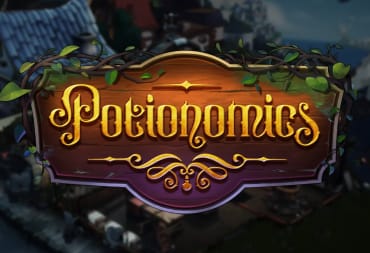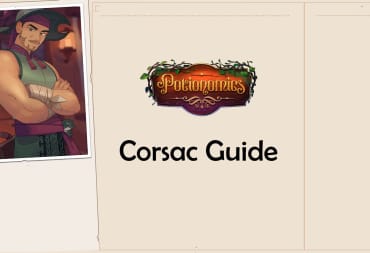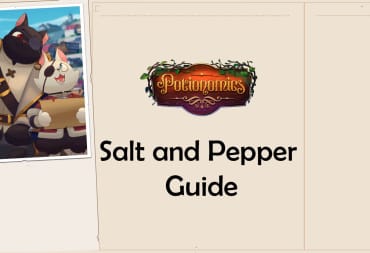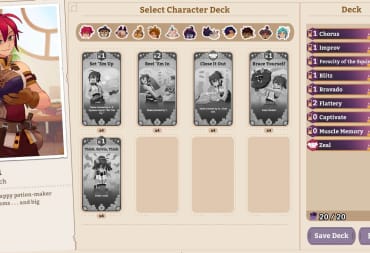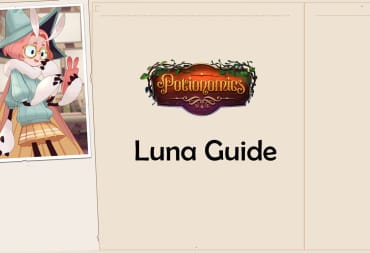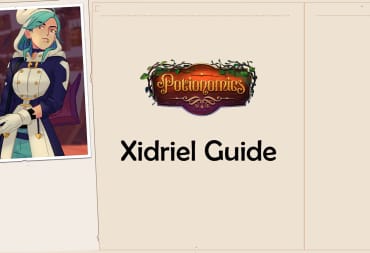Potionomics is a potion crafting shopkeeper sim where you must pay back your uncle’s debt while befriending a colorful cast of characters. Our Potionomics guides will help you get a grasp on this unique game by Voracious Games and XSEED Games.
Quicklinks: Potionomics Guides | Potionomics Starter Guide | F.A.Q.
Potionomics Guides
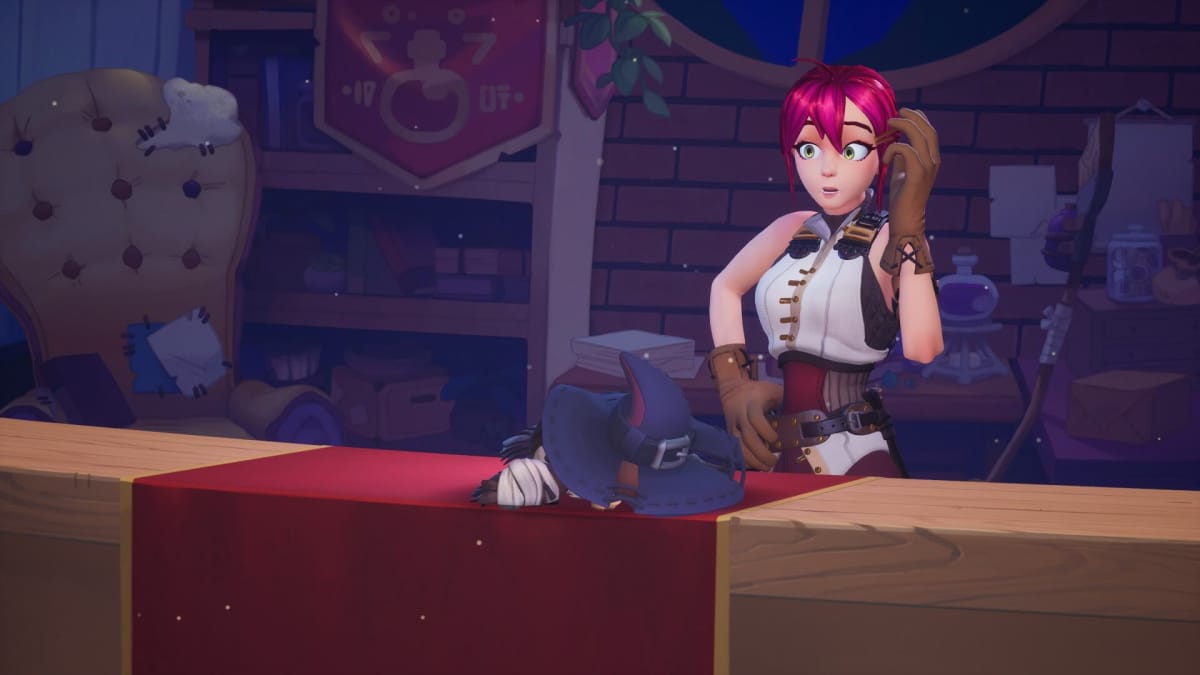
Potionomics Starter Guide
This Potionomics Starter Guide will help you deal with your first week as a potions witch.
Inheriting Your Uncle’s Store
Potionomics starts on a somewhat grim note, as you learn that your Uncle has passed away. In his final letter, he implores our protagonist Sylvia to inherit the store and continue his legacy. Unfortunately, said store also comes with a hefty amount of debt, totalling 1,000,000 gold.
After a soul-binding contract and the help of a mysterious talking Owl, you learn that it’s possible to pay off the debt by partaking in a weekly (10 days in Potionomics' case, rather than the usual 7) potion competition.
Potion Brewing
This is where potion brewing comes into play. Ingredients in Potionomics are made up of magimins, the components that you’ll need to keep track of to create the perfect potion. Magimins come in 5 varieties — A: Red, B: Green, C: Yellow, D: Blue, and E: Purple. Hovering over an ingredient in your inventory will show which magimins it contains, along with any positive or negative traits (the small icons below the magimin list).
Potions are crafted by adding in the right balance of magimins. For example, Health Potions (like the one you must craft during the tutorial), must have an equal balance or A: Red and B: Green magimins. Getting the perfect balance will increase the overall quality of the finished product, while straying further from the ratio has a chance to lower it.
Potion Quality and Tiers
Potions are sorted into six different tiers: Minor, Common, Greater, Grand, Superior, and Masterwork. The base recipe for each potion starts at Minor, with the tier increasing as you add more magimins into the cauldron. The amount of magimins and ingredients that can be added to a cauldron starts off quite low, meaning that it’s initially impossible to make the higher tiers (though this doesn’t matter until later).
Tracking the progress of your potion is possible via the bar at the top of the brewing screen. As you add ingredients and fill each segment of the bar, stars appear. The number of stars indicates an increase in quality for that tier, making it worth more when selling. After the bar fills all the way, the potion will then move to the next tier. Higher tier potions are naturally worth more, and are required for custom orders and, most importantly, the weekly competitions.
Haggling and Card Basics
Of course, while making a good potion will always give you an advantage, you also need to know how to sell them. Haggling in Potionomics comes in the form of a turn-based card game. You must make use of a 20 card deck (which can be created before opening the store) to hype up your potions for bigger profits.
Your main resource during haggling comes in the form of Patience. You must use Patience to play most cards, and it also goes down each turn. By playing cards, you’ll increase a customer interest, which in turn can boost the percentage price of your potion — the amount of interest needed is shown in the bottom right, along with the price increase. If you run out of patience, the customer will leave without buying, unless you’ve completely maxed their interest meter.
Furthermore, turns don’t end until you let them. This means that, depending on your deck, you could potentially only take a single turn before closing out the sale. The number of turns determine both how many cards you draw, and the amount of Patience that is lost once you end your current turn. You start with 3 cards and 1 Patience loss at turn end, with both increasing by one until the haggle is over. Both of these values can also be affected by buffs and debuffs as well.
Cards come in a few different flavors:
- Openers: Cards that contain an opener effect will grant additional bonuses if played at the start of a turn. Sylvia starts with the opener card “Set ‘Em Up”, which boosts the effectiveness of another card, “Reel ‘Em In).
- Closers: These will always end the current haggling attempt, applying a 5% increase to your potion’s price, alongside any other effects the card has.
- Stance: These are unique in that they stay in effect across multiple haggle attempts (i.e. you keep the buff even after that initial customer leaves). Only one stance can be applied at a time, though it stacks with other non-stance buffs.
The rest are considered “normal” cards, though they can still have a number of effects. Outside of Sylvia’s initial set of cards, more must be obtained by befriending the area’s various workers. Each has their own set of 8 cards to unlock, many unlocking new types of synergies and strategies for future haggling sessions.
Meeting a new main character for the first time will unlock one card for free. Early on, the rest must be earned by gifting items and completing rank-up events. Both Mint and Quinn have some useful early cards for tournaments, so it’s a good idea to keep gifting them items every day if possible.
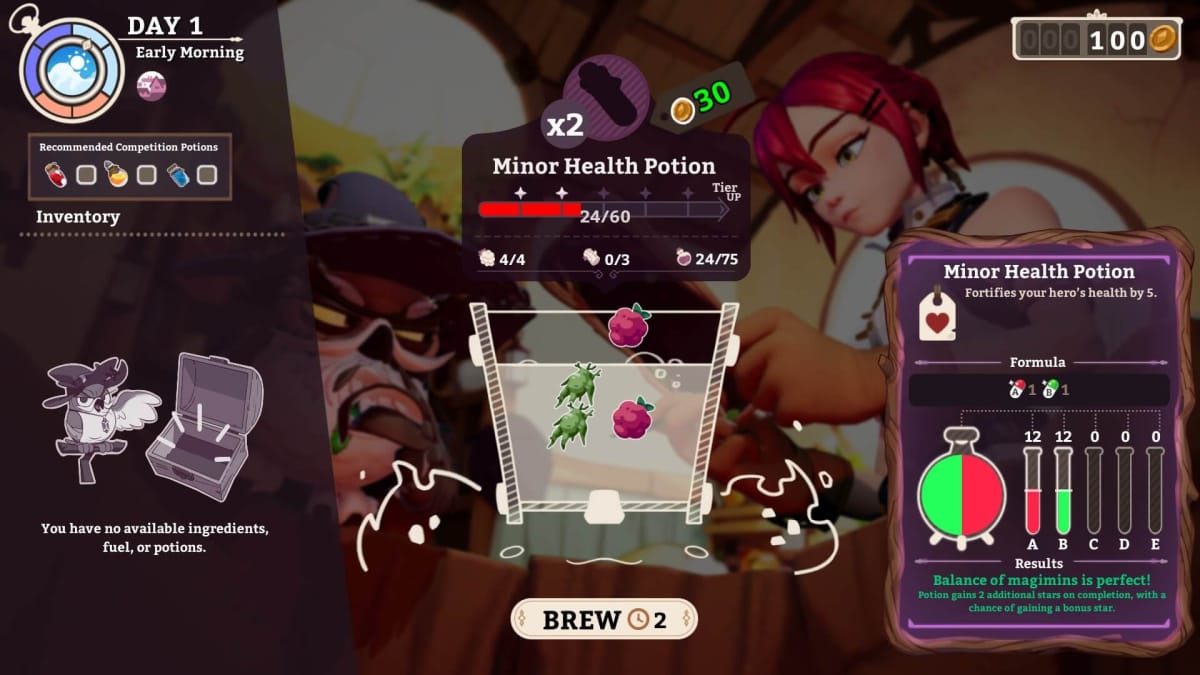
Creating the Perfect Potion
For the first competition round, you must craft a Common (Tier 2) Health Potion, Fire Tonic, and Mana Potion, each with 5 stars. Since the competion is done as a best of three, you don’t actually have to make the Mana Potion, assuming you’re able to win the first two rounds. This lets you concentrate on just making the best Common Health Potion and Fire Tonic you can.
To reach Common 5 star quality, you must both have the right ingredients, and acquire a cauldron that can hold the right amount of magimins. Thankfully, the process for both of these isn’t overly complicated.
New ingredients can be obtained via Adventuring and Expeditions. The former is unlocked on Day 2 once you’re introduced to Mint, the first adventurer you can send out to gather ingredients. Each area you can send Mint to will have its own ingredients, meaning that repeat trips are encouraged.
You’ll need both money (earned from selling potions) and specific potions for a successful adventure. Potions in particular are a must — monsters and hazards can drain Mint’s health, and she also needs one mana point for each encounter. It’s generally best to make sure she can reach the end every time, as this increases the rare rewards you obtain.
Meanwhile, daily Expeditions will unlock after Mint completes her first adventure. Here, you’ll be able to spend gold to directly buy three different ingredients. Buying more of one ingredient will also increase the chances of gaining addition rare materials — you can potentially get items from the final area while only on the first week.
Expedition ingredients are chosen at random at the start of each day, but the list will only include items from the latest areas you have unlocked. If you save before ending the day, you can check which new items are in, and reload to try again until the ingredients you want end up appearing. This is key to getting ingredients with the right magimins.
As for getting the right cauldron, you simply have to visit Muktuk’s store, available from Day 3. He’ll always have a cauldron that’s better than your current selection when a new week starts, making his shop the best place to visit before brewing the next set of competition potions. For the first week, either the Glass or Mudpack Cauldron is a solid choice. Both can also be upgraded with items found in the Mushroom Mire and Bone Wastes adventure areas.
When it comes to making your tournament potions, you’ll need to get a close the perfect ratio as possible. Doing so will let you earn extra stars, potentially even taking you past the recommended Common 5 star requirement.
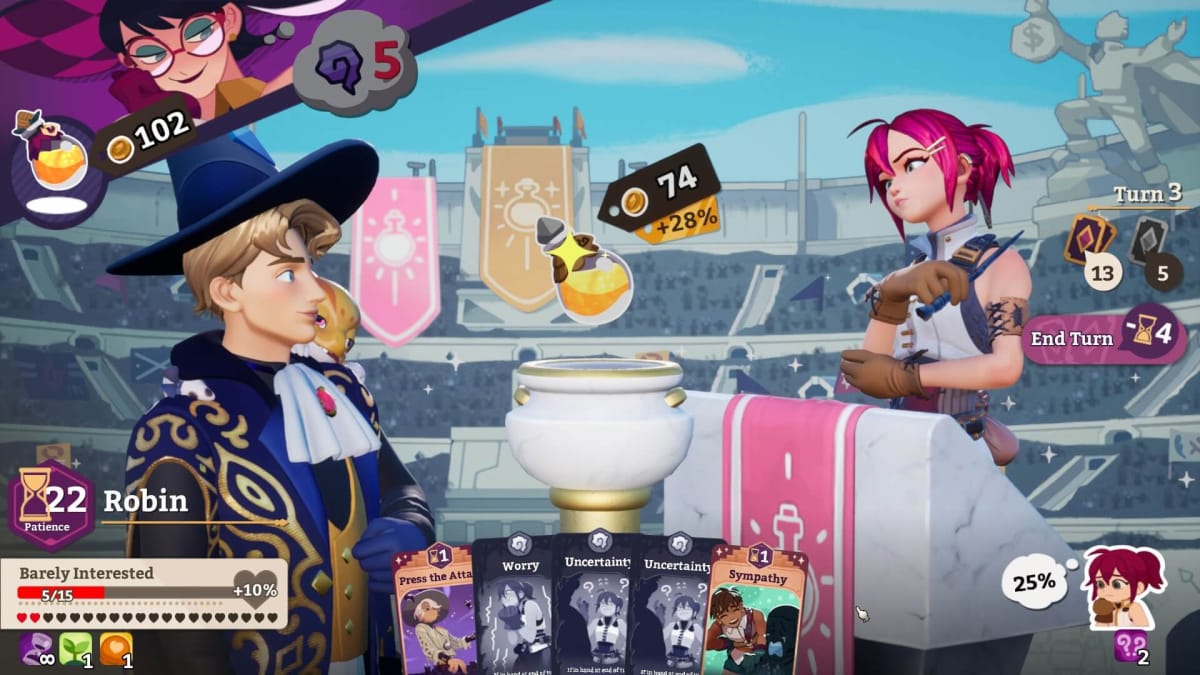
Competition Haggling
Haggling during the competition is essentially going through multiple long haggling sessions. Your opponent’s potion is given a price, and you must haggle to increase your potion’s value above this. As long as you reach the required quality, you wont have to haggle much. In fact, it’s possible to win outright if your potion is already more expensive than your opponent.
If things are looking tough, throwing in a few shield cards will always help to mitigate stress (though opponents have their own ways of sabotaging your hand of cards).
If you’ve made it through the first week, then congratulations! While new mechanics are introduced later, following a similar pattern to this initial week will keep you going without much issue. Just keep selling potions to make money, buy upgrades, hoard materials, then use the best ones you have to craft the perfect tournament potions.
Potionomics F.A.Q.
What is Potionomics?
Potionomics is a potion brewing management sim, with a card game mechanic for haggling. It is similar to Moonlighter and Recettear: An Item Shop's Tale, though there is no combat or dungeons to explore.
Does Potionomics Have a Time Limit?
Yes. Every 10 days, you must complete a tournament round, and the game ends after 50 days.
Does Potionomics Have New game Plus?
No. While it is possible to load previous saves, there is no system in place to start again using a completed save file
What Happens if You Lose the Competition in Potionomics?
If you lose during one of the weekly competitions in Potionomics, you'll get a game over and be sent back to the title screen. Depending on the quality of your potions or available cards, you may have to
Does Potionomics Feature Quick Saving?
Yes — new quick saves are made at the start of each day. The latest one is shown at the top of the save list, with the rest accessible via the "More Autosaves" button.
Have a tip, or want to point out something we missed? Leave a Comment or e-mail us at tips@techraptor.net








